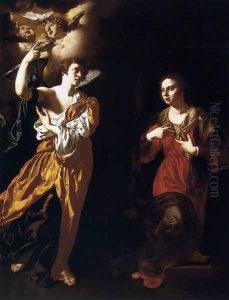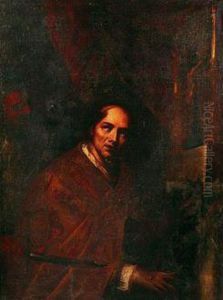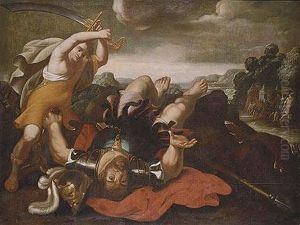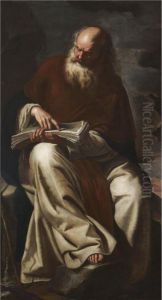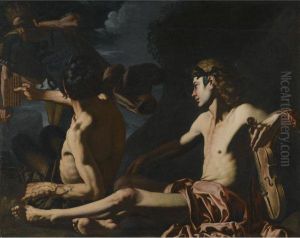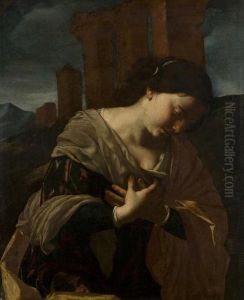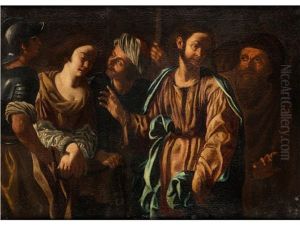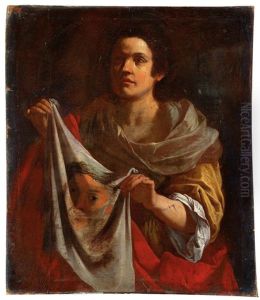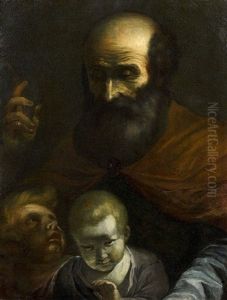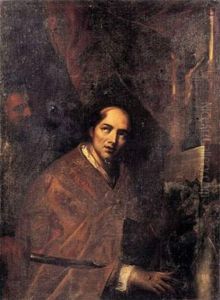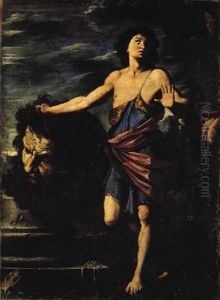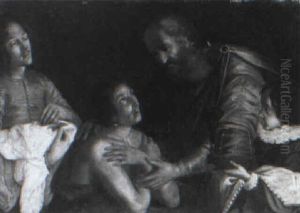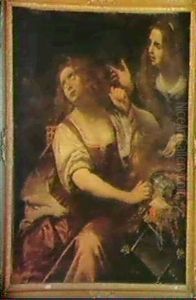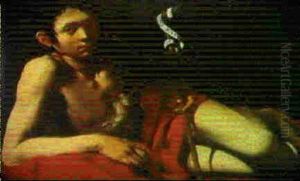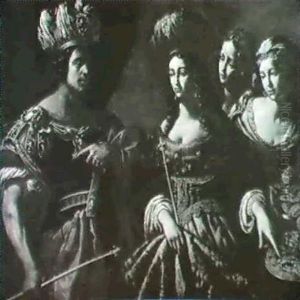Paolo Domenico Finoglia Paintings
Paolo Domenico Finoglia, an Italian painter of the Baroque era, was born in 1590 in Orta di Atella, a small town in the Campania region of southern Italy. Little is known about his early life and training, but it is believed that he may have been a pupil of Battistello Caracciolo, who was a prominent painter in Naples during the early 17th century and a key figure in introducing the Caravaggesque style to the region. Finoglia’s style, however, while influenced by Caravaggio's chiaroscuro and dramatic realism, developed into a more luminous and color-rich Baroque idiom, reflecting the influence of other contemporary Neapolitan painters and perhaps even the Venetian school.
Throughout his career, Finoglia was highly sought after for his skill in both fresco and oil painting. By the 1620s, he had begun to establish himself as a leading painter in Naples, receiving commissions from various religious and noble patrons. His works from this period include a series of frescoes for the Certosa di San Martino, one of Naples' most prominent monastic complexes, and the decoration of the Cappella del Tesoro di San Gennaro in the city's cathedral, which he undertook alongside other notable artists of the time.
In 1632, Finoglia was invited by the Spanish viceroy of Naples to move to Conversano, in the Apulia region, to work for Count Giulio Antonio Acquaviva. This patronage resulted in one of his most significant commissions - the decoration of the abbey church of San Benedetto in Conversano, where he painted a series of large frescoes illustrating scenes from the life of Benedict of Nursia. These works are considered among his masterpieces, showcasing his mature style characterized by dynamic compositions, vibrant coloration, and a keen sense of narrative drama.
Despite his success, details about Finoglia’s personal life remain scarce, and his last years seem to have been spent in Conversano, where he continued to work until his death in 1645. Today, Finoglia is remembered as a key figure in the development of Baroque painting in southern Italy, and his works are appreciated for their vibrant energy and rich storytelling. His legacy is preserved in the churches and palaces of Naples and Conversano, where his frescoes and paintings continue to attract admiration from both scholars and the general public.
